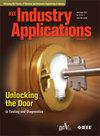基于数据驱动模型的考虑动态线路额定的混合可再生能源系统短期输电容量预测
IF 4.2
2区 工程技术
Q2 ENGINEERING, ELECTRICAL & ELECTRONIC
引用次数: 0
摘要
混合可再生能源系统的出力对调度计划和旋转备用容量至关重要,但受可再生能源发电机组出力和输电联络线容量的制约。考虑系线和整个HRES的动态线路额定值是有益的,因为它们对微天气条件的敏感性。不幸的是,综合考虑这些因素进行容量预测涉及天气因素的长期规律波动和短期不确定性变化,从而降低了预测的准确性。因此,本文提出了一种新的数据驱动模型来解决上述问题。首先,采用自适应噪声的完全集成经验模态分解(CEEMDAN)将容量序列分割为高、中、低频分量。随后,利用基于牛顿-拉斐尔优化器(NRBO) -双向门控循环单元(BiGRU)对具有风致随机性特征的高频分量进行预测;采用季节自回归综合移动平均(SAIMA)预测反映季节规律的中频分量;使用多变量线性回归(MLR)预测平滑和周期性低频分量。最后,将这些模型的预测结果结合起来,得出最终的预测值。案例研究表明,综合考虑配备DLR和HRES的输电联络线,可以提高HRES的对外输出能力,特别是在风力资源丰富的时期。所提出的数据驱动模型能够捕获高频波动、中频周期性和低频趋势,从而提高预测精度。本文章由计算机程序翻译,如有差异,请以英文原文为准。
Short-Term Transmission Capacity Prediction of Hybrid Renewable Energy Systems Considering Dynamic Line Rating Based on Data-Driven Model
The output capacity of Hybrid Renewable Energy Systems (HRES) is crucial for dispatching plans and spinning reserve capacity, but it's constrained by renewable energy generator output and transmission tie-line capacity. Considering both dynamic line rating for tie-lines and the entire HRES is beneficial due to their susceptibility to micro weather conditions. Unfortunately, considering them collectively for capacity forecasting involves long-term regular fluctuations and short-term uncertainty changes in weather factors, which reduces prediction accuracy. Thus, a novel data-driven model is introduced in this paper to address the aforementioned issue. Initially, Complete Ensemble Empirical Mode Decomposition with Adaptive Noise (CEEMDAN) is employed to segment the capacity sequence into high-, medium-, and low-frequency components. Subsequently, the high-frequency component, characterized by wind-induced randomness, is predicted using Newton-Raphson-Based Optimizer (NRBO) - Bidirectional Gated Recurrent Unit (BiGRU); the medium-frequency component, reflecting seasonal regularities, is forecasted using Seasonal Autoregressive Integrated Moving Average (SAIMA); and the smooth and periodic low-frequency component is anticipated using Multivariable Linear Regression (MLR). Finally, the predictions from these models are combined to derive the ultimate predictive value. Case studies demonstrate that comprehensive consideration of transmission tie-lines equipped with DLR, as well as HRES, can enhance the external output capability of HRES, especially during periods of abundant wind resources. The proposed data-driven model can capture high-frequency fluctuations, medium-frequency periodicity, and low-frequency trends in capacity to enhance prediction accuracy.
求助全文
通过发布文献求助,成功后即可免费获取论文全文。
去求助
来源期刊

IEEE Transactions on Industry Applications
工程技术-工程:电子与电气
CiteScore
9.90
自引率
9.10%
发文量
747
审稿时长
3.3 months
期刊介绍:
The scope of the IEEE Transactions on Industry Applications includes all scope items of the IEEE Industry Applications Society, that is, the advancement of the theory and practice of electrical and electronic engineering in the development, design, manufacture, and application of electrical systems, apparatus, devices, and controls to the processes and equipment of industry and commerce; the promotion of safe, reliable, and economic installations; industry leadership in energy conservation and environmental, health, and safety issues; the creation of voluntary engineering standards and recommended practices; and the professional development of its membership.
 求助内容:
求助内容: 应助结果提醒方式:
应助结果提醒方式:


